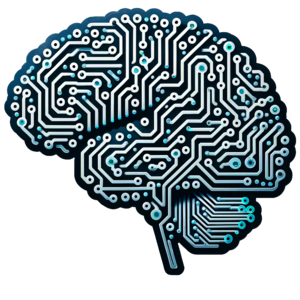
Artificial Intelligence (AI) refers to the simulation of human intelligence in machines that are programmed to think like humans and mimic their actions. This technology encompasses a range of subfields, including machine learning, where algorithms improve through experience, and deep learning, which involves neural networks with multiple layers that enable advanced computation. AI systems can perform tasks that typically require human intelligence, such as recognizing speech, making decisions, and translating languages.
The significance of AI in the educational sector is profound and multifaceted. AI has the potential to revolutionize how educational content is delivered, personalized, and assessed. It can provide teachers with invaluable tools to enhance their teaching methods and offer students customized learning pathways. Moreover, AI can manage administrative tasks, allowing educators to focus more on teaching and less on paperwork. In the realm of education, AI not only augments the teaching and learning experience but also drives efficiency and innovation within educational institutions.
Theoretical Foundations[edit | edit source]
Educational theories that support AI integration are rooted in the principles of constructivism, cognitivism, and behaviorism, which posit that learning is an active, contextualized process of constructing knowledge rather than acquiring it. These theories align with AI's capabilities to create dynamic learning environments that respond to the needs of each learner.
Constructivism suggests that learners construct knowledge through experiences and reflections. AI can facilitate this by providing simulated environments where students engage in problem-solving activities, allowing them to apply concepts in virtual scenarios.
Cognitivism focuses on the mental processes involved in learning, like thinking, memory, knowing, and problem-solving. AI can enhance these processes by offering intelligent tutoring systems that guide learners through complex concepts at their own pace, providing explanations, scaffolding, and feedback tailored to the learner's cognitive state.
Behaviorism emphasizes the role of feedback in learning. AI can deliver immediate feedback through practice exercises and quizzes, reinforcing learning through repetition and positive reinforcement.
Learning analytics and data-driven instruction are critical in understanding and improving learning processes. By collecting and analyzing data on student interactions, performance, and more, AI systems can uncover insights into learning behaviors, identify trends, and predict outcomes. This allows educators to make informed decisions about curriculum adjustments and intervention strategies, ensuring that instruction is responsive to the learner's progress and needs.
Personalized learning models leverage AI to tailor the educational experience[1] to individual learners’ abilities, preferences, and interests. AI systems can track progress, adapt difficulty levels of tasks, suggest resources, and set personalized goals. This approach fosters a student-centered learning environment, where instruction is differentiated, and students have a degree of control over their learning paths. Personalized learning models advocate for competence-based progression and flexible learning strategies, which AI can facilitate through adaptive learning platforms that accommodate a wide variety of learning styles and paces.
Technologies and Tools[edit | edit source]
AI-driven educational software and platforms have become increasingly sophisticated, capable of delivering a rich, interactive curriculum tailored to the diverse needs of students. These platforms can process vast amounts of data to provide insights into learning patterns, enabling educators to refine their teaching strategies and materials.
Adaptive learning systems represent a significant leap in educational personalization, adjusting the content and pace according to the individual learner's performance and preferences. By continuously analyzing a student's interactions and progress, these systems can present the most appropriate material at the right level of difficulty, ensuring a challenge that is neither too easy nor too daunting.
Intelligent tutoring systems[2] (ITS) are specialized AI applications that simulate one-on-one tutoring by providing immediate and personalized feedback to learners. ITS can guide students through complex problems, offer hints, and explain concepts in multiple ways, catering to various learning styles. These systems often incorporate natural language processing to understand and respond to student queries, facilitating a more natural learning interaction.
Lastly, educational data mining and learning analytics utilize AI to extract meaningful patterns from large datasets within educational contexts. This field involves analyzing detailed data about learners and their contexts for the purpose of understanding and optimizing learning and the environments in which it occurs. Through these insights, educators can identify at-risk students, forecast future performance, and tailor interventions to support learners effectively, thereby fostering a more informed and responsive educational environment.